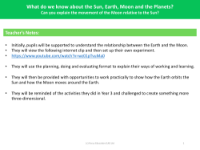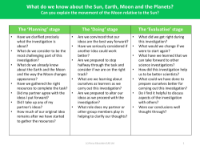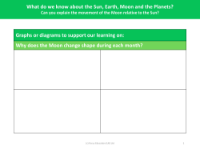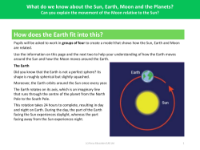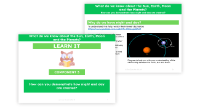How can you explain the movement of the Moon relative to the Earth? - Presentation
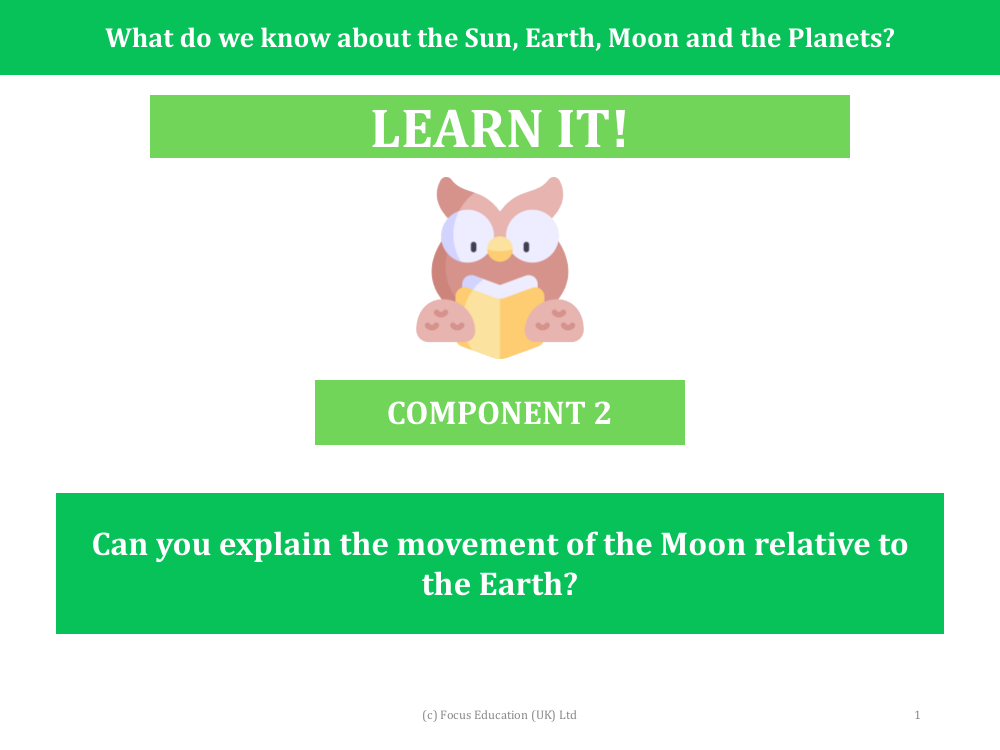
Science Resource Description
The presentation aims to elucidate the complex dance between the Earth and the Moon. It begins by establishing the foundational knowledge that pupils already have about the celestial bodies within our solar system. To deepen their understanding of the Earth-Moon relationship, students are encouraged to watch an educational video clip. Following this, they are tasked to conduct an experiment that mirrors the one shown in the video, enabling them to explore the reasons behind the Moon's changing phases. The hands-on approach is designed to foster a practical comprehension of how the Moon orbits the Earth and how this movement affects what we see from our vantage point on Earth.
Emphasising the inquiry-based learning method, the presentation guides students through the 'Planning', 'Doing', and 'Evaluative' stages of their experiment. Pupils are prompted to consider the aims of their investigation, the challenges it might present, and any pre-existing knowledge they might have about the Earth and the Moon. They are encouraged to gather appropriate resources, collaborate with peers, and remain open to modifying their ideas as their understanding evolves. Once the experiment is complete, the students are expected to reflect on their findings, discuss their conclusions, and consider how the experience has enhanced their skills as young scientists. The ultimate goal is for them to construct a model that demonstrates the orbital relationships between the Sun, Earth, and Moon, thereby solidifying their grasp of these fundamental astronomical concepts.
